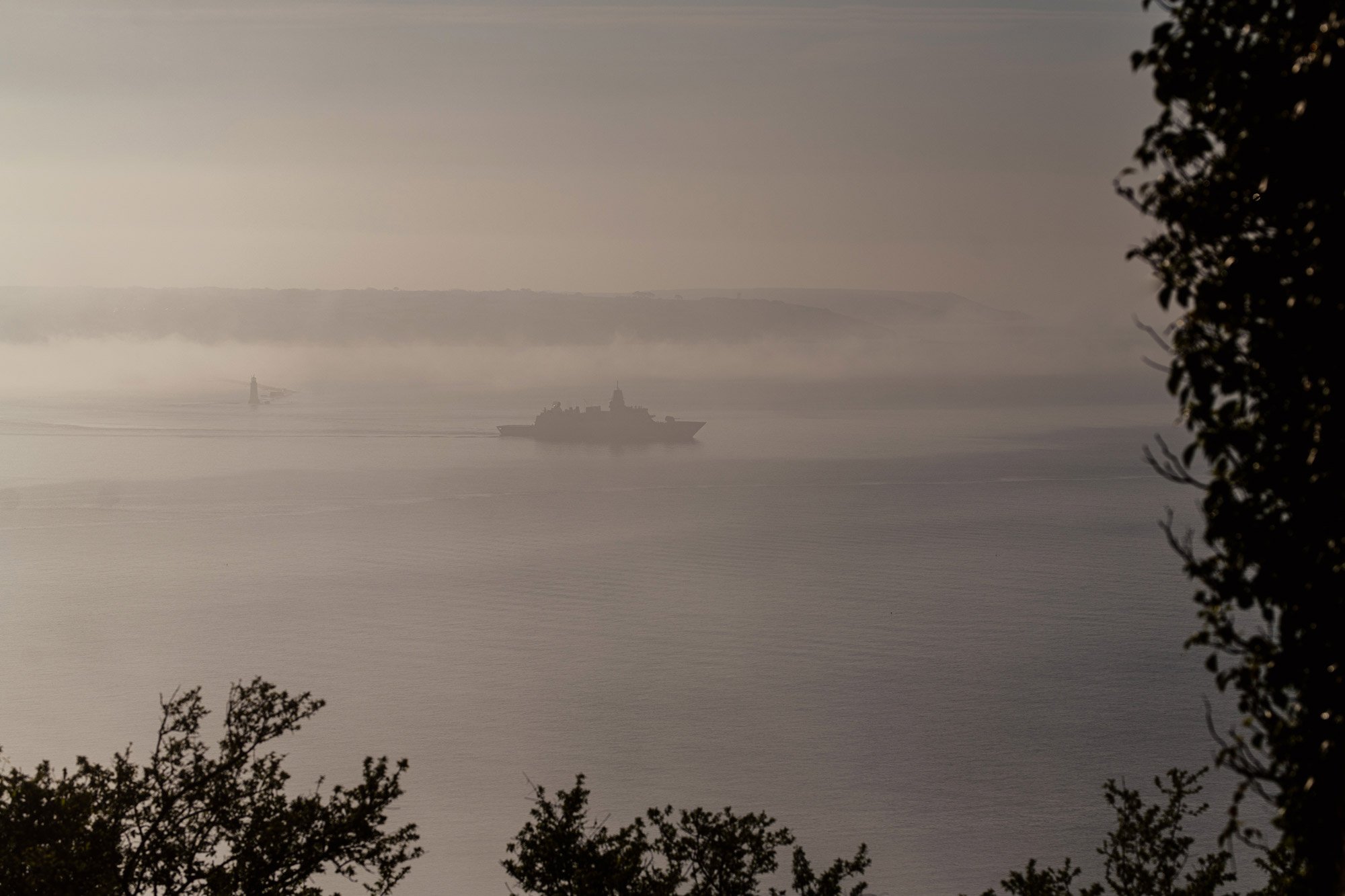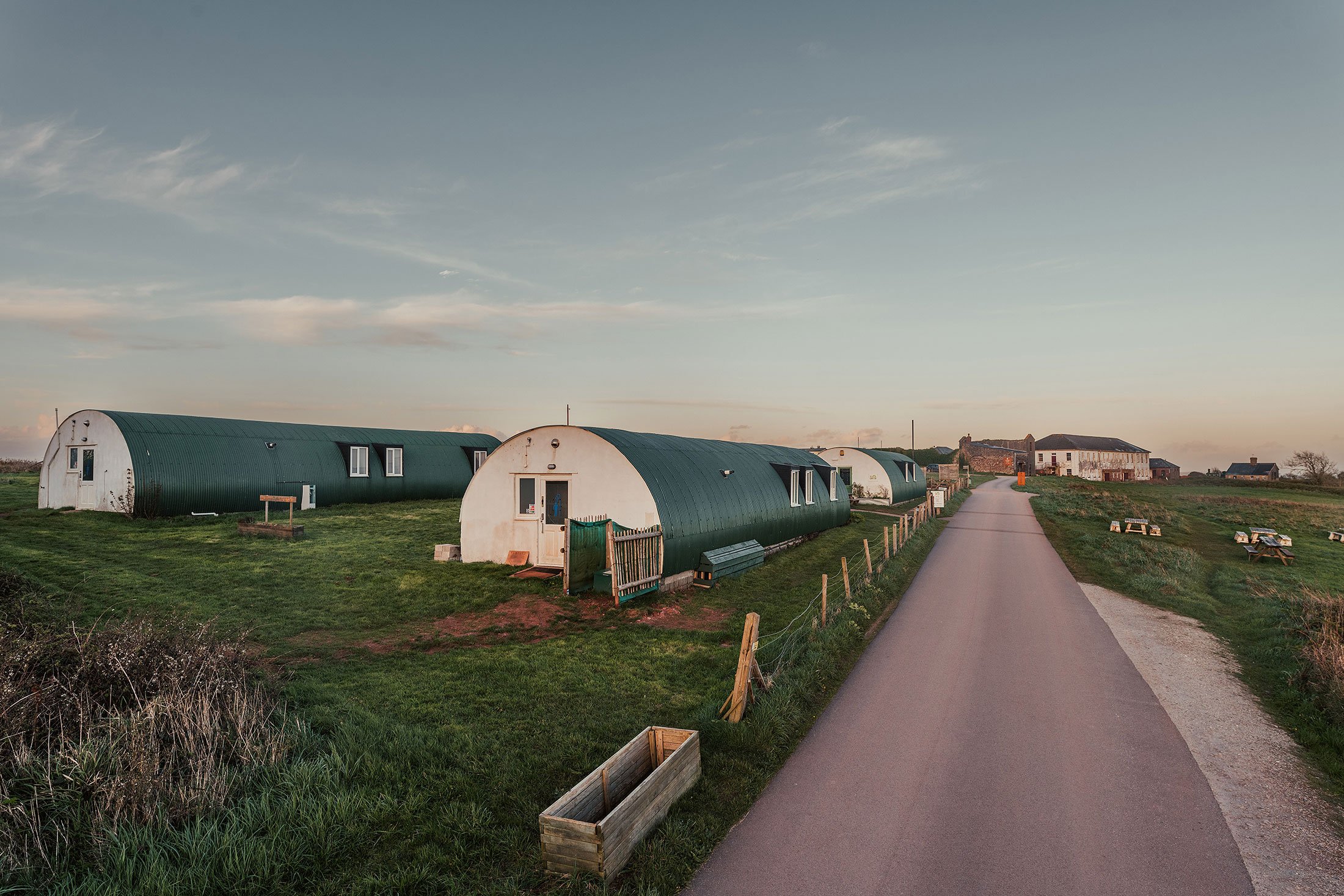
The 1779
Franco- Spanish
Armada
The 1779 Franco-Spanish Armada
The main defences structures here at Maker Heights are, excluding the WW2 HAA battery and the 1960’s ROC bunker, the direct result of the 1779 Armada.
The word ‘Armada’ is generally associated with the famous Spanish attempted invasion of 1588 which was successfully rebuffed by Francis Drake. There were other little known Spanish attempts in 1596, 1597 and 1598 – all of which failed.
However, few people know about the 1779 Armada which was a huge, combined effort by France and Spain to invade Britain. It presents an interesting story.
During the American Revolutionary War (1775 – 1783), usually referred to as the War of Independence, the British Royal Navy was stretched with commitments across the Atlantic. Protection of the British coastline was left to the Channel Fleet. This was not insubstantial in size with @ 40 ships of the line.
In 1778 the British Royal Navy and French navy had met in a battle off Ushant at the western end of the English Channel. This sea battle was indecisive. Subsequently the French wanted to take advantage of the split Royal Navy but realised that both the British and French fleets were too evenly matched. They therefore proposed to Spain that there was an opportunity to join forces, creating a battle fleet that could defeat the British Channel Fleet, and subsequently then follow through with an invasion.
Initially the Spanish were hesitant as they had significant trade and territories in the Americas and were nervous about upsetting the British. However, the ceding of Gibraltar under the Treaty of Utrecht in 1713 was still a sore point, so seeing a chance of achieving a position to win Gibraltar back using a potential British ‘land grab’ as a negotiating ploy seemed tempting. The agreement to create a combined Franco-Spanish invasion fleet was made.
The French started building up their fleet in Brest but struggled to find crew. At the same time an army was started to be put together in Brittany where it was planned to build an invasion resource of @ 30 - 40,000 troops plus 400 barges. The plan was to destroy the British Channel Fleet then proceed to a landing on the Isle of White, creating a defensible bridgehead for the invading troops to land then attack the naval base in Portsmouth. However, things started to go wrong from the outset.
The French fleet not only found it hard to get crew, but also was only part provisioned as they did not want to give British spies reason the believe a major event was planned. The fleet set sail turning south towards the agreed rendezvous off Corunna. Then two further issues arose: the embarked crew and soldiers had brought sickness on board – probably what was then known as ‘sea fever’(now known as Typhus) and probably dysentery. In addition, the Spanish fleet was late in turning up blaming poor communications. However some suggested it was because the Spanish Admiral was unhappy about not being in overall command. Subsequently, especially with onboard close quarter living conditions, and given it was a hot August, this meant the sickness spread rapidly. When the Spanish did arrive, blaming poor communication, a few more days were then needed to work out flag signals and language issues. The sickness spread to the Spanish fleet.
However, the huge, combined fleet of around 150 ships (probably @ 80 line-of-battle ships plus various frigates and support vessels) set sail northwards looking to find the British Channel Fleet – commanded by a Vice Admiral Hardy - and destroy it. Unfortunately, they could not locate the British, so headed up the Channel towards the agreed destination of the Isle of Wight. The French Admiral – Comte d’Orvilliers – then received orders to divert back to Falmouth where it had been decided it would make for an easier landfall. So, the Franco-Spanish fleet hove to – finding itself off Plymouth.
Seeing such a large hostile force just offshore caused panic locally in Plymouth and indeed word quickly spread along the south coast that an invasion was imminent with an assumed landing at Cawsand. However, apart from the increasing sickness (records suggest as much as 60% of the crews were sick) there was another problem for the invasion ships – an unusual August easterly gale blew up pushing the fleet westwards back down the Channel. After another failed attempt to locate the British fleet and with such catastrophic sickness on board (it is thought some 8,000 sailors and soldiers had died by this time) the 1779 invasion of Britain was abandoned.
Interestingly, after this both France and Spain remained committed to working together with joint fleets as neither could take on the British navy alone.
But Redoubt building on Maker Heights had already begun.
There were also plans to build a huge ‘Star’ fort which was intended originally to link all the Redoubts together to form a coherent fortification This was to have been sited where the Maker Heights campsite now is. But by 1786 this plan had been abandoned for reasons of cost. It was voted down by the single casting vote of the Speaker in Parliament.
Had this huge star fort been built, Maker Heights would now look very different!

